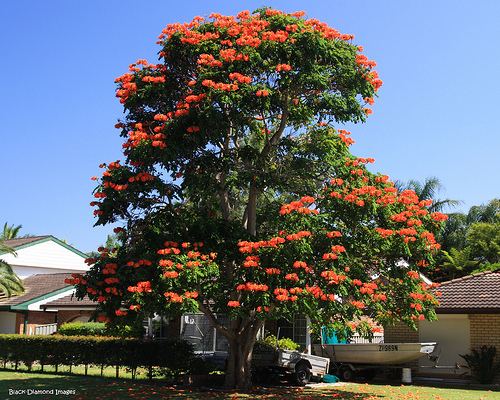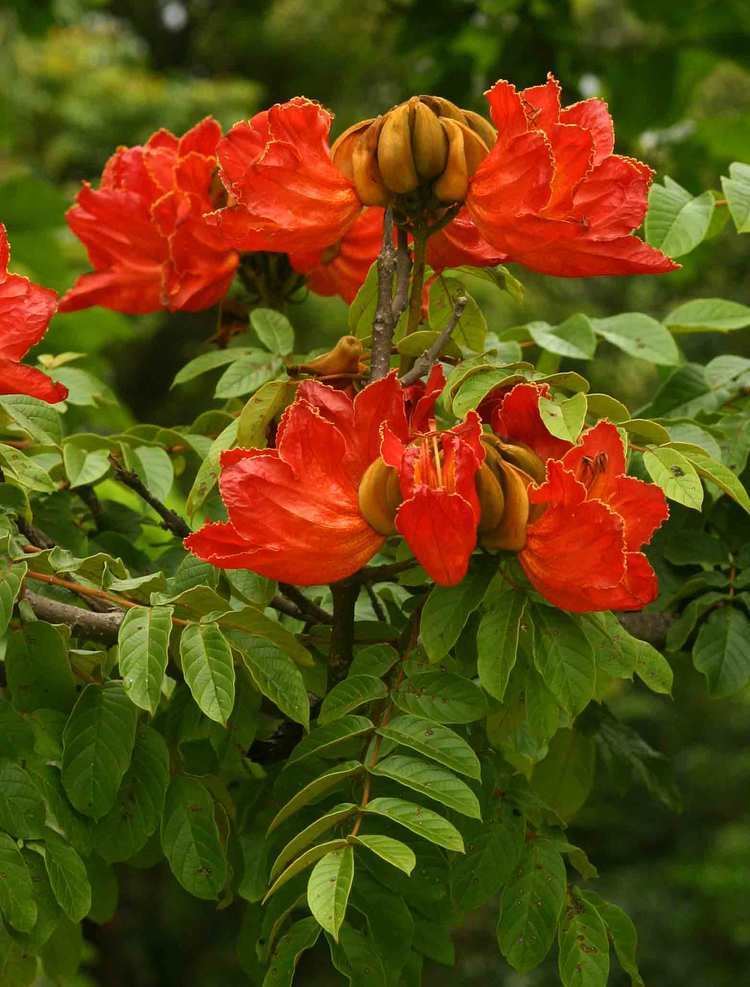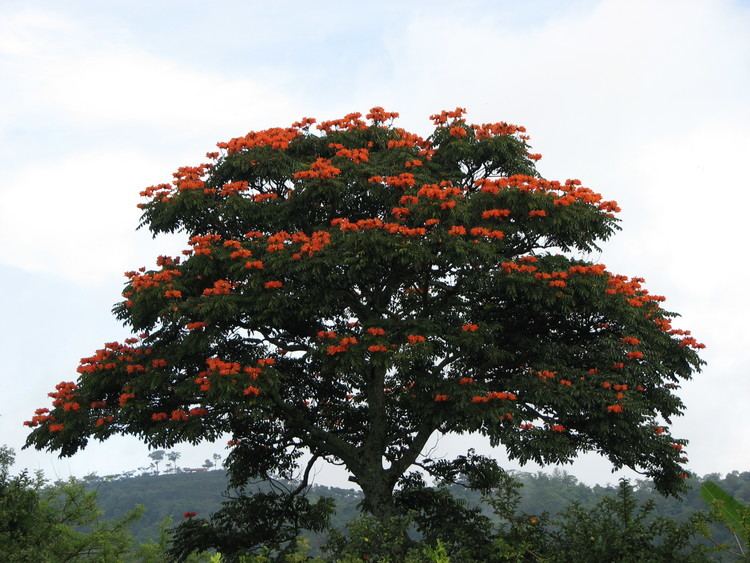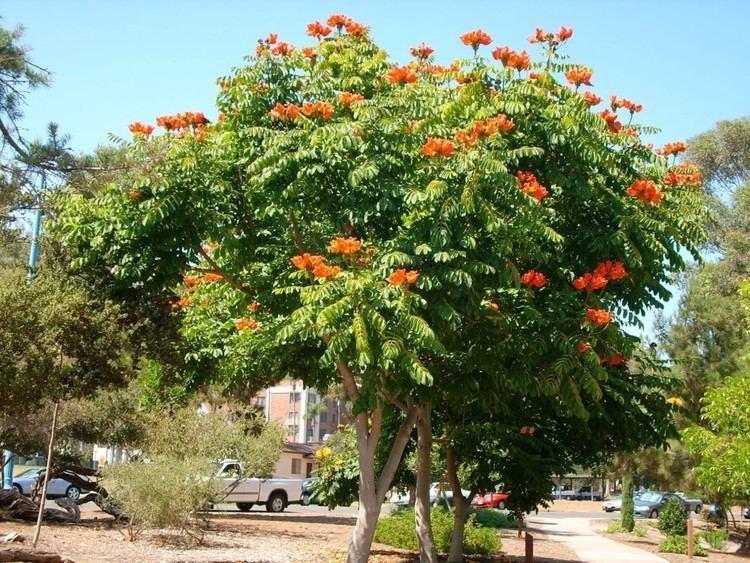Genus Spathodea Higher classification Spathodea | Tribe Tecomeae Scientific name Spathodea campanulata Rank Species | |
 | ||
Similar Bignoniaceae, Royal poinciana, Phanera variegata, Millingtonia hortensis, Tabebuia rosea | ||
Spathodea campanulata african tulip tree
Spathodea is a monotypic genus in the flowering plant family Bignoniaceae. The single species it contains, Spathodea campanulata, is commonly known as the African tuliptree, fountain tree, pichkari or Nandi flame. The tree grows between 7–25 m (23–82 ft) tall and is native to tropical dry forests of Africa. It has been nominated as among 100 of the "World's Worst" invaders.
Contents
- Spathodea campanulata african tulip tree
- Choosing a tree african flame tree or spathodea campanulata
- Description
- Species associations
- Geographic distribution
- Pests and diseases
- Common names
- References

This tree is planted extensively as an ornamental tree throughout the tropics and is much appreciated for its very showy reddish-orange or crimson (rarely yellow), campanulate flowers. The generic name comes from the Ancient Greek words σπαθη (spathe) and οιδα (oida), referring to the spathe-like calyx. It was identified by Europeans in 1787 on the Gold Coast of Africa.

Choosing a tree african flame tree or spathodea campanulata
Description

The flower bud is ampule-shaped and contains water. These buds are often used by children who play with its ability to squirt the water. The sap sometimes stains yellow on fingers and clothes. The open flowers are cup-shaped and hold rain and dew, making them attractive to many species of birds.
Species associations

In Neotropical gardens and parks, their nectar is popular with many hummingbirds, such as the black-throated mango (Anthracothorax nigricollis), the black jacobin (Florisuga fusca), or the gilded hummingbird (Hylocharis chrysura). The wood of the tree is soft and is used for nesting by many hole-building birds such as barbets.
Geographic distribution


It has become an invasive species in many tropical areas such as Hawaii, Queensland (Australia), Fiji, Papua New Guinea, and the wet and intermediate zones of Sri Lanka.
S. campanulata is a declared class 3 pest species in Queensland, Australia, under the Land Protection (Pest and Stock Route Management) Act 2002.
Pests and diseases
In Uganda, two lepidopteran species, two termite species, and one bark beetle attack S. campanulata. In Puerto Rico nine insect species in the orders Hemiptera, Hymenoptera, Lepidoptera, and Thysanoptera have been reported as feeding on various parts of S. campanulata. The species is quite susceptible to butt and heart rot; wood of the tree rots quickly when in contact with the ground.
